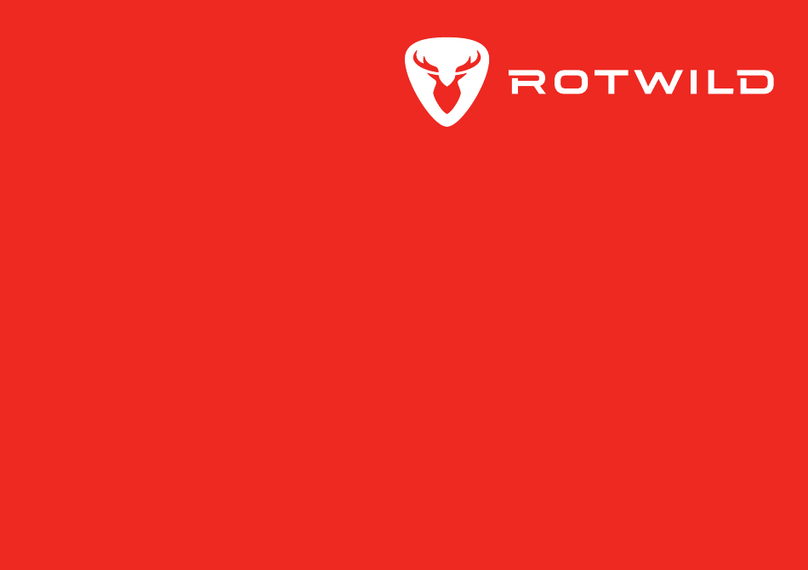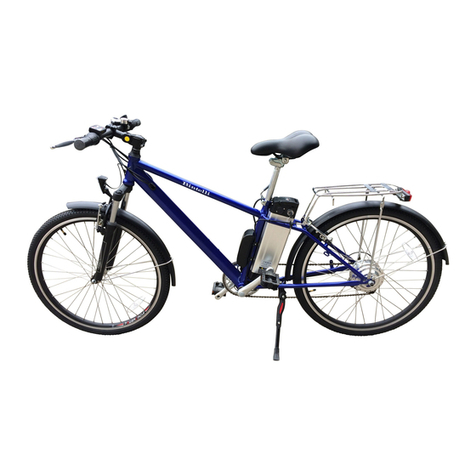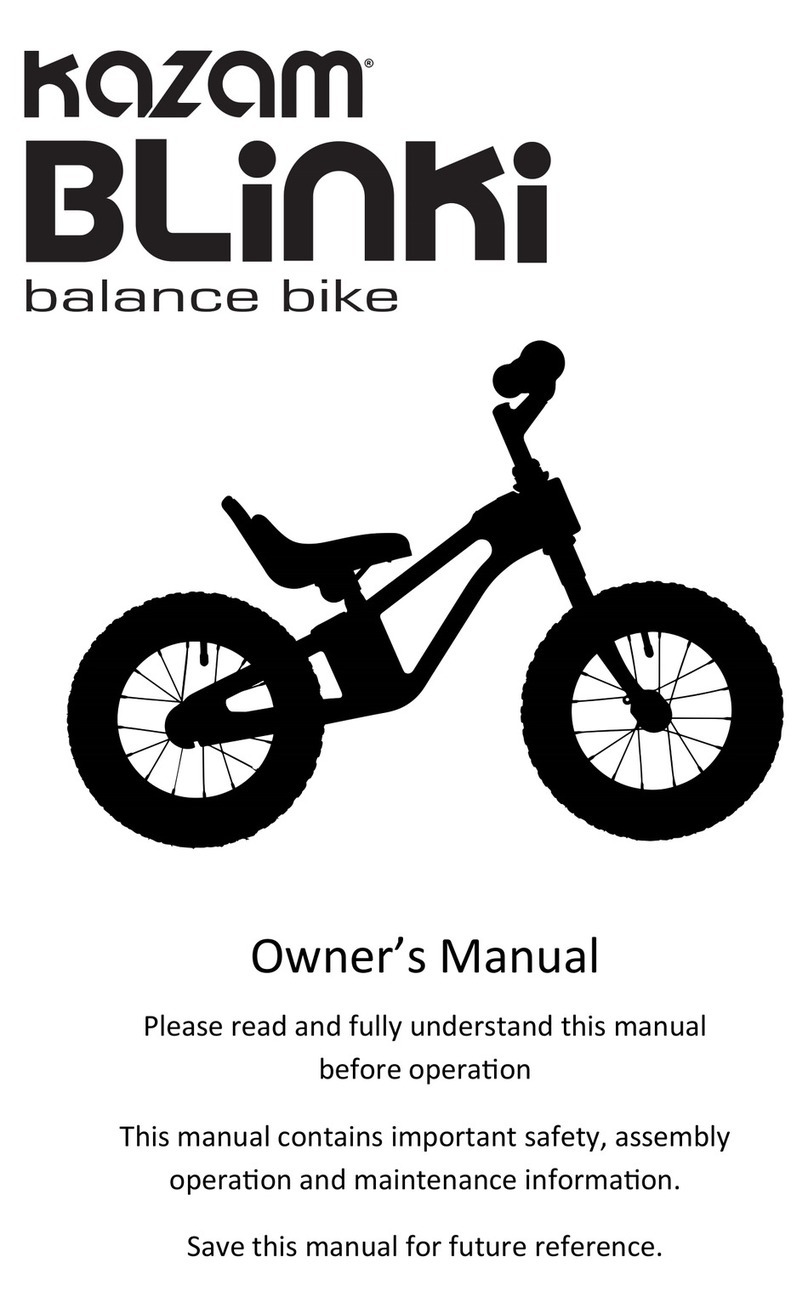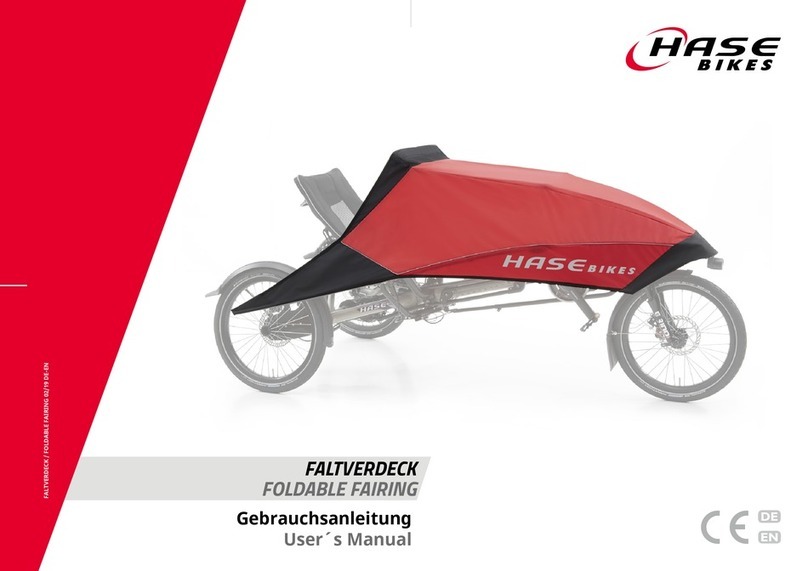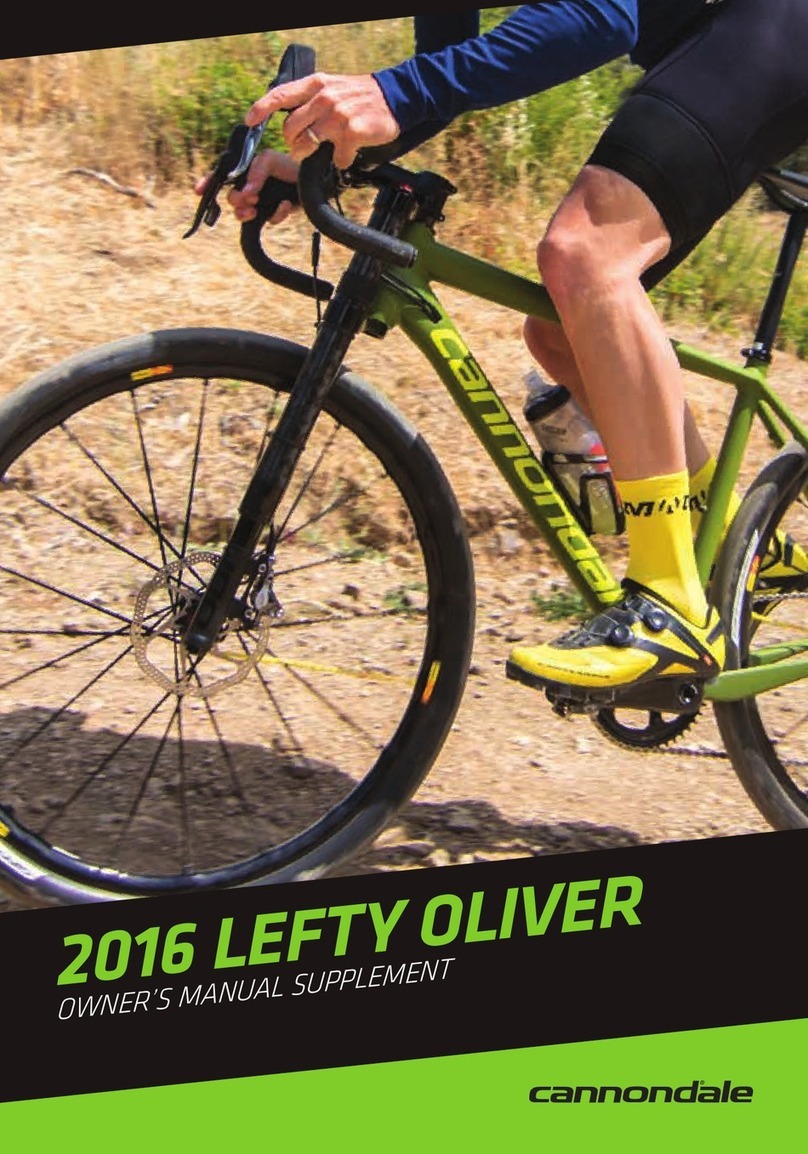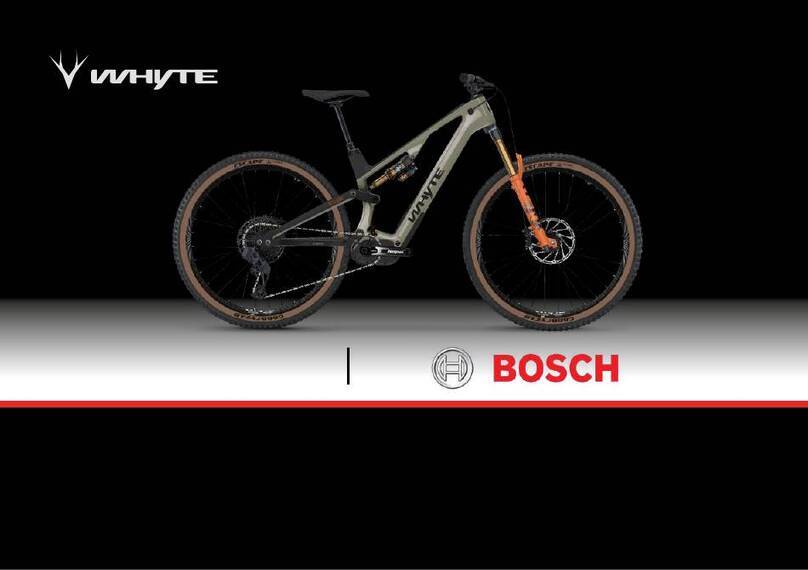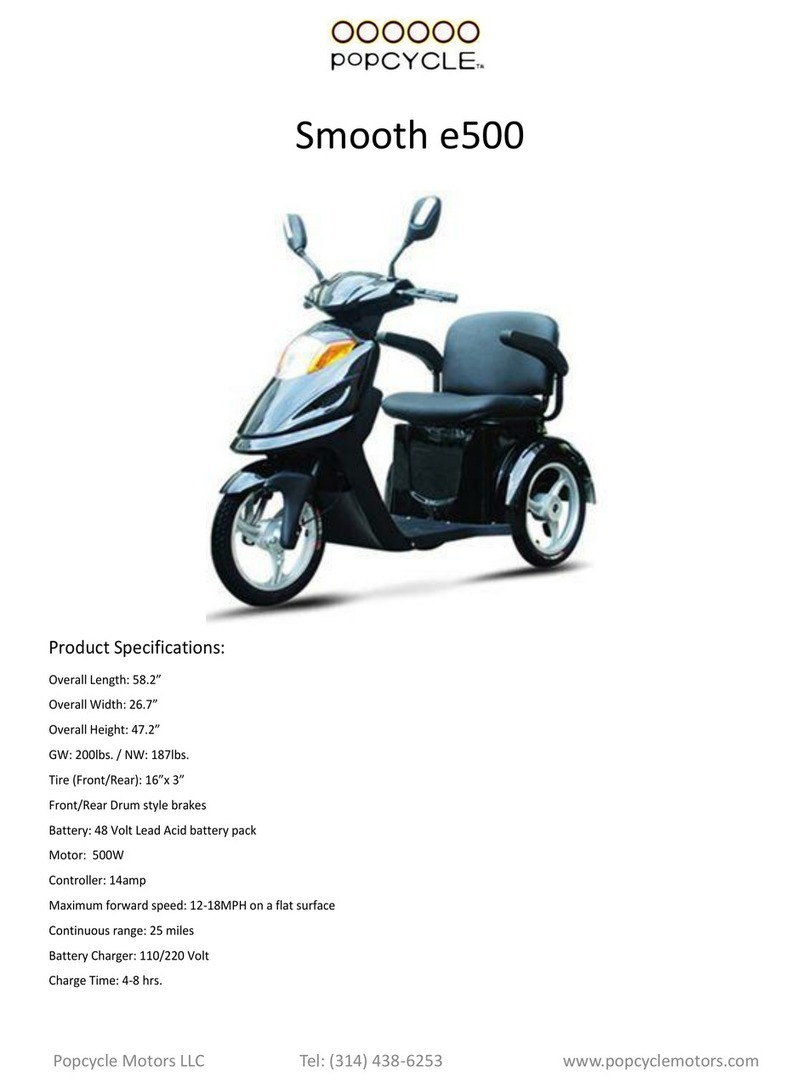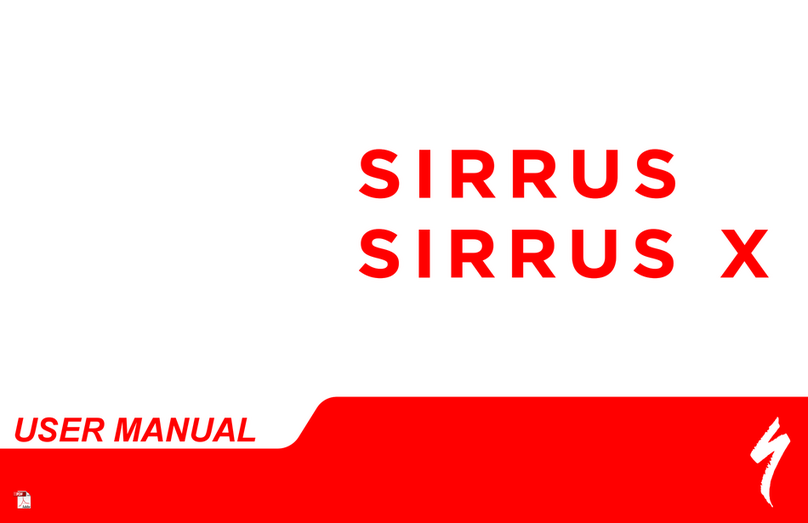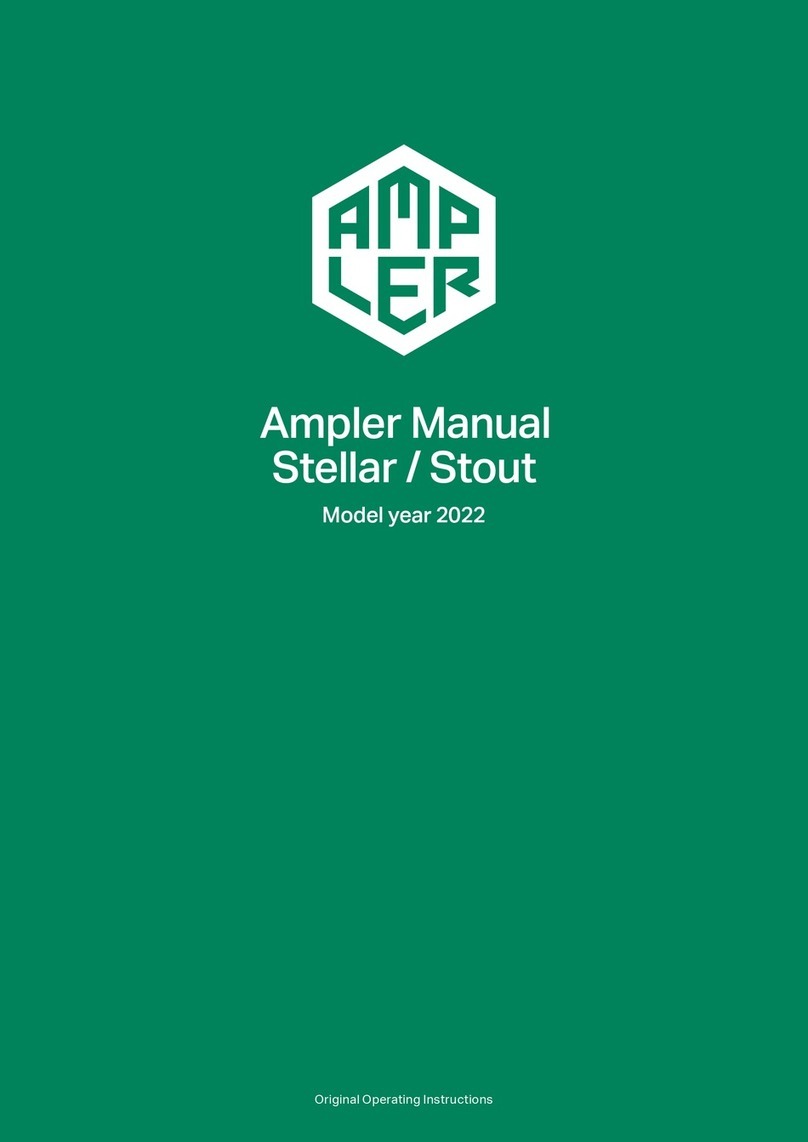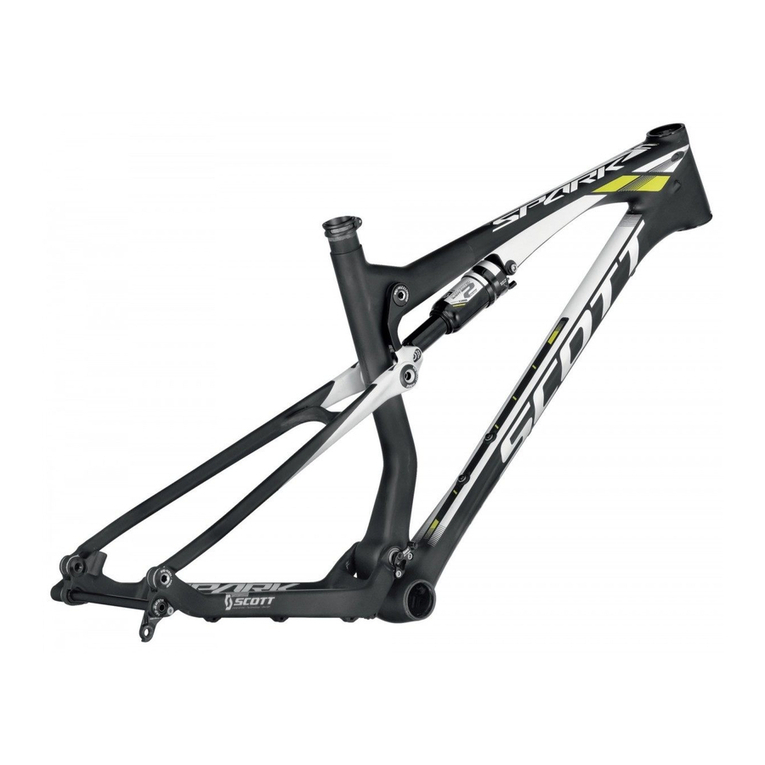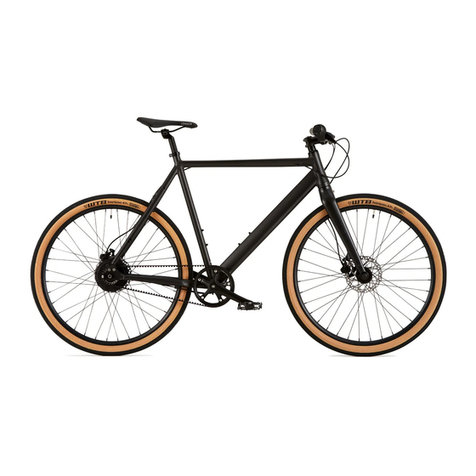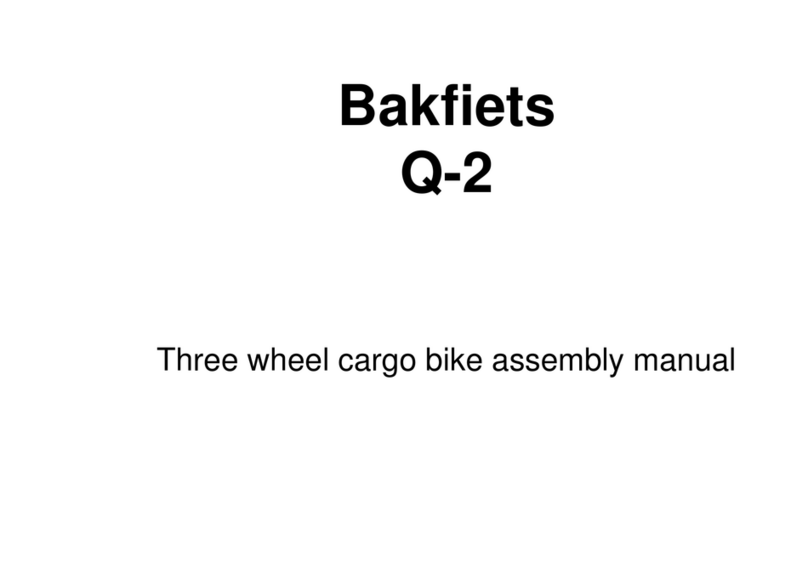Suzuki LT-F160 2006 User manual

Top
1st cover4th cover
Top
1st cover4th cover
LT-F160
99011-02C77-01DLT-F160
K7 Printed in Korea
300 TAKATSUKA, HAMAMATSU, JAPAN
15 mm15 mmNo.6155 LT-F160 99011-02C77-01D 2/1No.6155 LT-F160 99011-02C77-01D 2/1 DIC184(TDP006) DIC157
Part No. 99011-02C77-01D
April, 2006 EN, FR, SP
TK
OWNER’S MANUAL
MANUEL DU PROPRIETAIRE
MANUAL DEL PROPIETARIO
This owner’s manual contains
important safety information.
Please read it carefully.
Never allow anyone under 16
years old to ride this ATV.
Ce ’Manuel du propriétaire contient
des informations importantes
concernant la sécurité.
Le lire soigneusement.
Ne jamais autoriser les enfants
âgés de moins de 16 ans à
piloter ce V.T.T.
Este manual del usuario contiene
información de seguridad importante.
Léalo detenidamente.
No permita que nadie menor de 16
años de edad conduzca esta ATV.

LT-F160
OWNER’S MANUAL
ENGLISH
ENGLISH
This manual should be considered a permanent part of the vehi-
cle and should remain with the vehicle when resold or otherwise
transferred to a new owner or operator. The manual contains
important safety information and instructions which should be
read carefully before operating the vehicle.

IMPORTANT
Please read this manual and follow its
instructions carefully. To emphasize
special information, the symbol
and the words WARNING or CAU-
TION have special meanings. Pay
special attention to the messages
highlighted by these signal words:
NOTE: Indicates special information
to make maintenance easier or
instructions clearer.
WARNINGs and CAUTIONs are
arranged like this:
FOREWORD
• This owner’s manual contains
important safety and maintenance
information. Read it carefully
before you ride your new ATV.
Failure to follow the warnings con-
tained in this manual can result in
INJURY or DEATH.
• Do not allow anyone under age 16
to ride this ATV.
• Anyone who purchases a new
ATV, and everyone in the pur-
chaser’s immediate family who is
old enough to ride the ATV pur-
chased (see label), is entitled to
take a training course at no addi-
tional charge. Others can take the
training course for a small fee.
When a non-business purchaser
or age-appropriate family mem-
ber completes training, the pur-
chaser will receive a $100 check if
it is their first ATV or a $50 check if
they have owned an ATV before.
Limit one per ATV purchased. Ask
an authorized Suzuki dealer for
the details or call 1-800-887-2887
for training information.
• It is important that this manual
remain with the vehicle when you
sell it. The next owner will need
this manual also. Store the
owner’s manual under the LT-
F160’s seat.
• Review the “Tips and Practice
Guide” handbook supplied with
this owner’s manual (for owner’s in
USA). This special handbook con-
tains a variety of safety tips, help-
ful hints, and practice exercise
that can increase your riding
enjoyment and safety.
WARNING
Indicates a potential hazard that
could result in death or injury.
CAUTION
Indicates a potential hazard that
could result in vehicle damage.
WARNING-or-CAUTION
This first part will identify a
POTENTIAL HAZARD.
This second part will describe
WHAT CAN HAPPEN if you ignore
the WARNING or CAUTION.
This third part will describe HOW
TO AVOID THE HAZARD.

• All information, illustrations, pho-
tographs and specifications con-
tained in this manual are based on
the latest product information
available at the time of publication.
Due to improvements or other
changes, there may be some dis-
crepancies between information in
this manual and your ATV. Suzuki
reserves the right to make produc-
tion changes at any time, without
notice and without incurring any
obligation to make the same or
similar changes to vehicles previ-
ously built or sold.
• Suzuki Motor Corporation
believes in conservation and pro-
tection of Earth’s natural
resources. To that end, we
encourage every vehicle owner to
recycle, trade in, or properly dis-
pose of, as appropriate, used
motor oil, coolant, and other fluids,
batteries; and tires.
© COPYRIGHT SUZUKI MOTOR
CORPORATION 2006
NOTICE TO OWNERS
AN ATV IS NOT A TOY AND CAN
BE HAZARDOUS TO OPERATE–An
ATV handles differently from other
vehicles including motorcycles and
cars. A collision or rollover can occur
quickly, even during routine maneu-
vers such as turning and driving on
hills or over obstacles, if you fail to
take proper precautions.
SEVERE INJURY OR DEATH can
result if you do not follow these
instructions:
• Read this manual and all labels
carefully and follow the operating
procedures described.
• Never operate an ATV without
proper instruction. Take a training
course. Beginners should receive
training from a licensed instructor.
Contact an authorized ATV dealer
or call 1-800-887-2887 to find out
about the training courses nearest
you.
• Always follow this age recommen-
dation:
– A child under 16 years old
should never operate an ATV with
engine size greater than 90 cc.
•Never carry a passenger on an
ATV.
• Always avoid operating an ATV on
paved surfaces, including side-
walks, paths, parking lots, drive
ways, and streets.
• Never operate an ATV on any
public street, road or highway,
even a dirt or gravel one.

• Never operate an ATV without
wearing an approved motorcycle
helmet that fits properly. You
should also wear eye protection
(goggles or face shield), gloves,
boots, long-sleeved shirt or jacket,
and long pants.
• Never consume alcohol or drugs
before or while operating this ATV.
• Never operate at excessive
speeds. Always go at a speed that
is proper for the terrain, visibility
and operating conditions, your
skills and experience.
• Never attempt wheelies, jumps, or
other stunts.
• Always inspect your ATV each
time you use it to make sure it is in
safe operating condition. Always
follow the inspection and mainte-
nance procedures and schedules
described in this manual.
• Always keep both hands on the
handlebars and both feet on the
footpegs of the ATV during opera-
tion.
• Always go slowly and be extra
careful when operating on unfa-
miliar terrain. Always be alert to
changing terrain conditions when
operating the ATV.
• Never operate on excessively
rough, slippery or loose terrain
until you have learned and prac-
ticed the skills necessary to con-
trol the ATV on such terrain.
Always be especially cautious on
these kinds of terrain.
• Always follow proper procedures
for turning as described in this
manual. Practice turning at low
speeds before attempting to turn
at faster speeds. Do not turn at
excessive speed.
• Never operate the ATV on hills too
steep for the ATV or for your abili-
ties. Practice on smaller hills
before attempting larger hills.
• Always follow proper procedures
for climbing hills as described in
this manual. Check the terrain
carefully before you start up any
hill. Never climb hills with exces-
sively slippery or loose surfaces.
Shift your weight forward. Never
open the throttle suddenly or
make sudden gear changes.
Never go over the top of any hill at
high speed.
• Always follow proper procedures
for going down hills and for brak-
ing on hills as described in this
manual. Check the terrain care-
fully before you start down any hill.
Shift your weight backward. Never
go down a hill at high speed.
Avoid going down a hill at an
angle that would cause the vehicle
to lean sharply to one side. Go
straight down the hill where possi-
ble.
• Always follow proper procedures
for crossing the side of a hill as
described in this manual. Avoid
hills with excessively slippery or
loose surfaces. Shift your weight
to the uphill side of the ATV. Never
attempt to turn the ATV around on
any hill until you have mastered
the turning technique described in
this manual on level ground. Avoid
crossing the side of a steep hill if
possible.

• Always use proper procedures if
you stall or roll backwards when
climbing a hill. To avoid stalling,
use the proper gear and maintain
a steady speed when climbing a
hill. If you stall or roll backwards,
follow the special procedure for
braking described in this manual.
Dismount on the uphill side or to a
side if pointed straight uphill. Turn
the ATV around and remount, fol-
lowing the procedure described in
this manual.
• Always check for obstacles before
operating in a new area. Never
attempt to operate over large
obstacles, such as large rocks or
fallen trees. Always follow proper
procedures when operating over
obstacles as described in this
manual.
• Always be careful when skidding
or sliding. Learn to safely control
skidding or sliding by practicing at
low speeds and on level, smooth
terrain. On extremely slippery sur-
faces, such as ice, go slowly and
be very cautious in order to
reduce the chance of skidding or
sliding out of control.
• Never operate an ATV in fast flow-
ing water or in water deeper than
that specified in this manual.
Remember that wet brakes may
have reduced stopping ability. Test
your brakes after leaving water. If
necessary, apply them several
times to let friction dry out the lin-
ings.
• Always be sure there are no
obstacles or people behind you
when you operate in reverse.
When it is safe to proceed in
reverse, go slowly. Always use the
size and type tires specified in this
manual. Always maintain proper
tire pressure as described in this
manual.
• Never modify an ATV through
improper installation or use of
accessories.
• Never exceed the stated load
capacity for an ATV. Cargo should
be properly distributed and
securely attached. Reduce speed
and follow instructions in this man-
ual for carrying cargo or pulling a
trailer. Allow greater distance for
braking.
FOR MORE INFORMATION ABOUT
ATV SAFETY, call the Consumer
Product Safety Commission at 1-800-
638-2772, or the ATV Distributors’
Safety Hotline at 1-800-852-5344.
WARNING
Indicates a potential hazard that
could result in injury or death.


TABLE OF CONTENTS
1
2
3
4
5
6
7
8
9
10
FUEL AND OIL RECOMMENDATIONS
CONTROLS, EQUIPMENT AND ADJUSTMENTS
RIDING YOUR ATV
ACCESSORY USE AND VEHICLE LOADING
INSPECTION AND MAINTENANCE
TROUBLESHOOTING
PREPARATION FOR WINTER RIDING
TRANSPORTING
CLEANING PROCEDURE AND STORAGE PROCEDURE
CONSUMER INFORMATION
SPECIFICATIONS
INDEX


1-1
1
FUEL AND OIL
RECOMMENDATIONS
FUEL .............................................................................................................1-2
ENGINE OIL ..................................................................................................1-3

1-2
FUEL AND OIL
RECOMMENDATIONS
FUEL
Use unleaded gasoline with an
octane rating of 91 or higher
(Research method). Unleaded gaso-
line can extend spark plug life and
exhaust components life.
(For Canada)
Yo u r m o t o r c y c l e requires unleaded
gasoline with a minimum pump
octane rating of 87 ((R+M)/2 method).
In some areas, the only fuels that are
available are oxygenated fuels. Oxy-
genated fuels which meet the mini-
mum octane requirement and the
requirements described below may
be used in your motorcycle without
jeopardizing the New Vehicle Limited
Warranty or the Emission Control
System Warranty.
NOTE: Oxygenated fuels are fuels
which contain oxygencarrying addi-
tives such as MTBE or alcohol.
Gasoline Containing MTBE
Unleaded gasoline containing MTBE
(Methyl Tertiary Butyl Ether) may be
used in your motorcycle if the MTBE
content is not greater than 15%. This
oxygenated fuel does not contain
alcohol.
Gasoline/Ethanol Blends
Blends of unleaded gasoline and eth-
anol (grain alcohol), also known as
GASOHOL, may be used in your
motorcycle if the ethanol content is
not greater than 10%.
Gasoline/Methanol Blends
Fuels containing 5% or less methanol
(wood alcohol) may be suitable for
use in your motorcycle if they contain
co-solvents and corrosion inhibitors.
DO NOT USE fuels containing more
than 5% methanol under any circum-
stances. Fuel system damage or
motorcycle performance problems
resulting from the use of such fuels
are not the responsibility of Suzuki
and may not be covered under the
New Vehicle Limited Warranty or the
Emission Control System Warranty.
NOTE:
• To help clean the air, Suzuki rec-
ommends that you use oxygen-
ated fuels.
• Be sure that any oxygenated fuel
you use has octane ratings of at
least 87 pump octane ((R+M)/2
method).
• If you are not satisfied with the
driveablity of your motorcycle
when you are using an oxygen-
ated fuel, or if engine pinging is
experienced, substitute another
brand as there are differences
between brands.
CAUTION
Spilled gasoline containing alco-
hol can harm your ATV.
Alcohol can damage painted sur-
faces.
Be careful not to spill any fuel
when filling the fuel tank. Wipe
spilled gasoline up immediately.

1-3
ENGINE OIL
Oil quality is a major contributor to
your engine’s performance and life.
Always select good quality engine oil.
Use SF/SG or SH/SJ with JASO MA
in API (American Petroleum Institute)
classification.
API: American Petroleum Institute
JASO: Japanese Automobile Stan-
dards Organization
SAE Engine Oil Viscosity
Suzuki recommends the use of SAE
10W-40 engine oil. If SAE 10W-40
engine oil is not available, select an
alternative according to the following
chart.
JASO T903
The JASO T903 standard is an index
to select engine oils for 4-stroke
motorcycle and ATV engines. Motor-
cycle and ATV engines lubricate
clutch and transmission gears with
engine oil. JASO T903 specifies per-
formance requirements for motorcy-
cle and ATV clutches and
transmissions.
There are two classes, MA and MB.
The oil container shows the classifica-
tion as follows.
1Code number of oil sales company
2Oil classification
Energy Conserving
Suzuki does not recommend the use
of “ENERGY CONSERVING” oils.
Some engine oils which have an API
classification of SH or higher have an
“ENERGY CONSERVING” indication
in the API classification doughnut
mark. These oils can affect engine life
and clutch performance.
Not recommended Recommended
SAE API JASO
10W-40 SF or SG –
10W-40 SH or SJ MA
E
N
E
R
G
Y
C
O
N
S
E
R
V
I
N
G
A
P
I
S
E
R
V
I
C
E
S
J
SAE
10W-40
A
P
I
S
E
R
V
I
C
E
S
J
SAE
10W-40


2-1
2
CONTROLS, EQUIPMENT AND
ADJUSTMENTS
LOCATION OF PARTS .................................................................................2-2
KEY ............................................................................................................... 2-5
IGNITION SWITCH ....................................................................................... 2-5
INDICATOR LIGHTS ....................................................................................2-6
REVERSE LEVER ........................................................................................ 2-6
GEARSHIFT LEVER .....................................................................................2-7
LEFT HANDLEBAR ......................................................................................2-7
CHOKE LEVER .............................................................................................2-8
RIGHT HANDLEBAR .................................................................................... 2-9
THROTTLE LIMITER .................................................................................... 2-9
CHOKE LIMITER KNOB ............................................................................. 2-10
REAR BRAKE PEDAL ............................................................................... 2-10
PARKING BRAKE LOCK LEVER ..............................................................2-10
FUEL VALVE ..............................................................................................2-11
FUEL TANK CAP ........................................................................................2-12
SEAT LOCK ................................................................................................2-13
COMPARTMENT BOX ............................................................................... 2-13
REAR SUSPENSION ADJUSTMENT ........................................................ 2-14
FLAG BRACKET ........................................................................................ 2-14

2-2
CONTROLS, EQUIPMENT AND ADJUSTMENTS
LOCATION OF PARTS
1Left handlebar switches
2Choke lever
3Indicator lights
4Ignition switch
5Throttle lever
6Front brake lever
7Reverse lever
8Fuel tank cap

2-3
9Battery
0Fuse
AFuel valve
BThrottle stop screw
CCam chain tensioner
DTools
ESeat lock
FGearshift lever
GFootrests

2-4
HAir cleaner
IEngine oil filler cap
JChoke limiter knob
KSpark plug
LParking brake lever
MEngine oil inspection window
NRear brake pedal
OEngine oil drain plug
PEngine oil filter

2-5
KEY
Two keys come with this vehicle. Keep
the spare key in a safe place. An iden-
tifying number is stamped on the
keys. Use this number when making a
replacement key.
Please write down your key number in
the box provided for your future refer-
ence.
IGNITION SWITCH
The ignition switch has three posi-
tions.
“OFF” position
All electrical circuits are cut off. The
engine will not start. The key can be
removed.
“ON” position
The ignition circuit is on and the
engine can be started. The key can-
not be removed in this position.
“LIGHTS” position
The ignition circuit is on and the head-
light and taillight turn on. The key can-
not be removed in this position.
WARNING
Indicates a potential hazard that
could result in injury or death.
Key:
CAUTION
Leaving the ignition switch in the
“LIGHTS” position for a long time
can damage the ATV’s battery.
The battery will run down if the
lights are on for a long time when
the engine is not running.
Always leave the ignition switch in
the “OFF” position when not oper-
ating the ATV.

2-6
INDICATOR LIGHTS
Neutral Indicator 1
A green light will come on when the
transmission is in neutral. The light
will go out when you shift into any
gear other than neutral.
Reverse Indicator 2
A red light will come on when the
transmission is in reverse gear.
REVERSE LEVER
This vehicle has a reverse gear. To
shift into reverse gear, completely
stop the vehicle and shift the trans-
mission into neutral. Pull the reverse
lever upward. When the ATV is in
reverse gear, the gearshift lever will
not operate.
WARNING
Shifting into reverse gear when
the ATV is moving can be hazard-
ous.
If you shift the ATV into reverse
gear when the ATV is moving, it
could stop suddenly, throwing
you from the ATV.
Always come to a complete stop
and shift into neutral before shift-
ing into reverse gear.

2-7
GEARSHIFT LEVER
This vehicle has a 5-speed transmis-
sion which operates as shown in the
illustration. The shift lever is attached
to a ratchet type mechanism in the
transmission. Each time you select a
gear, the gearshift lever will return to
its normal position ready to select the
next gear. Engage first gear by lifting
the lever from the neutral position.
You can shift into higher gears by lift-
ing on the shift lever once for each
gear. The ratchet mechanism makes
it impossible to upshift or downshift
more than one gear at a time.
LEFT HANDLEBAR
Dimmer Switch 1
Use the dimmer switch to select the
high or low headlight beam when the
ignition switch is in the “LIGHTS”
position. When you move the dimmer
switch to the “HI” position, the high
beam will light. When you move the
dimmer switch to the “LO” position,
the low beam will light.
Engine Stop Switch 2
“OFF” position
The ignition circuit is off. The engine
cannot start or run.
“RUN” position
The ignition circuit is on and the
engine can run.
Electric Starter Button 3
Use this button to turn the starter
motor. Before starting the engine,
make sure the ignition switch is in the
“ON” position and the transmission is
in neutral. Push the electric starter
button to start the engine.
NOTE: This vehicle is equipped with
interlock switches for the starter cir-
cuit. The engine cannot be started if
the transmission is not in neutral.
Table of contents
Other Suzuki Bicycle manuals

